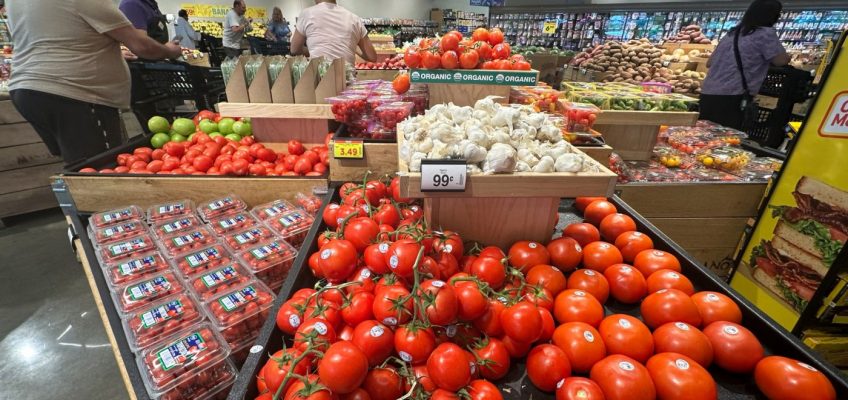By ANNE D’INNOCENZIO, Associated Press Business Writer
WASHINGTON (AP) — After an earlier pullback, consumers picked up their spending in June despite anxiety over tariffs and the state of the U.S. economy.
Retail sales rose a better-than-expected 0.6% in June after declining 0.9% in May, the Commerce Department said Thursday. Sales in April fell 0.1%, pulled down by a steep drop in auto sales, after Americans ramped up their car-buying in March to get ahead of President Donald Trump’s 25% duty on imported cars and car parts.
Excluding autos and automotive parts, sales rose 0.5%, according to the Commerce Department.
FILE – Shoppers leave Macy’s in Boston, Nov. 29, 2019. (AP Photo/Michael Dwyer, file)
There was broad-based strength across the board. Clothing and accessories stores posted a 0.9% sales increase, while restaurants had a 0.6% increase. Online retailers saw a 0.4% gain.
The retail sales report arrives amid a whipsaw frenzy of on and off again tariffs have that jolted businesses and households. For businesses, that has made it harder to manage supply and inventories. Americans are focusing more on necessities, when they do shop.
The latest government report showed that inflation rose last month to its highest level since February as Trump’s sweeping tariffs push up the costs of everything from groceries and clothes to furniture and appliances.
Related Articles
Army veteran and US citizen arrested in California immigration raid warns it could happen to anyone
Today in History: July 17, Disneyland’s opening day
Puppies rescued from flood-stricken Texas arrive at Chicago shelter
Grand Canyon blaze shows how managing a fire can go suddenly sideways
Authorities take custody of 21 kids in California while surrogate moms claim couple misled them
Consumer prices rose 2.7% in June from a year earlier, the Labor Department said Tuesday, up from an annual increase of 2.4% in May. On a monthly basis, prices climbed 0.3% from May to June, after rising just 0.1% the previous month.
Trump insists that the U.S. effectively has no inflation as he has attempted to pressure Federal Reserve Chair Jerome Powell into reducing short-term interest rates.
Yet the new inflation numbers make it more likely that the central bank will leave rates where they are. Powell has said that he wants to measure the economic impact of Trump’s tariffs before reducing borrowing costs.
Americans have continued to spend, but they appear to be growing cautious.
A big litmus test was Amazon’s four-day Prime event along with competing retail sales from the likes of Walmart and Target that kicked off last week. Adobe Digital Insights, which tracks online sales, reported that the sales events drove $24.1 billion in online spending, a 30.3% increase compared with the same period last year.
But those buying prioritized lower priced essentials like dish soap and paper products over big-ticket purchases, according to consumer data provider Numerator, based on its analysis of Amazon Prime orders.
Deborah Weinswig, founder and CEO of Coresight Research, said she’s becoming more optimistic about the financial health of the consumer after the Amazon Prime events. She said inventories are at a healthy level, and she didn’t’ see these big fire sales.
”People aren’t buying things that they don’t need,” she said. “I think it’s a healthier retail environment.”
Retailers are now turning their attention to the back-to-school shopping season, which is the second largest shopping period behind the winter holidays. Coresight Research estimates that total U.S. back-to-school spending will increase by 3.3% year compared with the year-ago period, to $33.3 billion. And it predicts that shoppers will do a big chunk of their shopping before August to get ahead of tariffs.
Economists will also dissect quarterly financial reports next month from major retailers like Walmart, Target and Macy’s, both for consumer behavior and to gauge how businesses are navigating a chaotic period of global trade due to fluid U.S. policies.
Levi Strauss & Co. said last week that it was cutting back on making styles that aren’t selling and making targeted price increases as it moves production away from China due to tariffs.


Leave a Reply